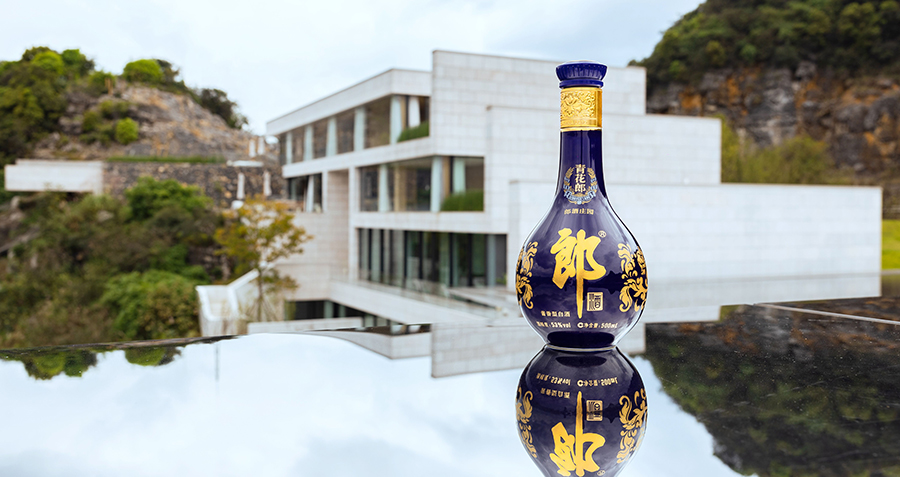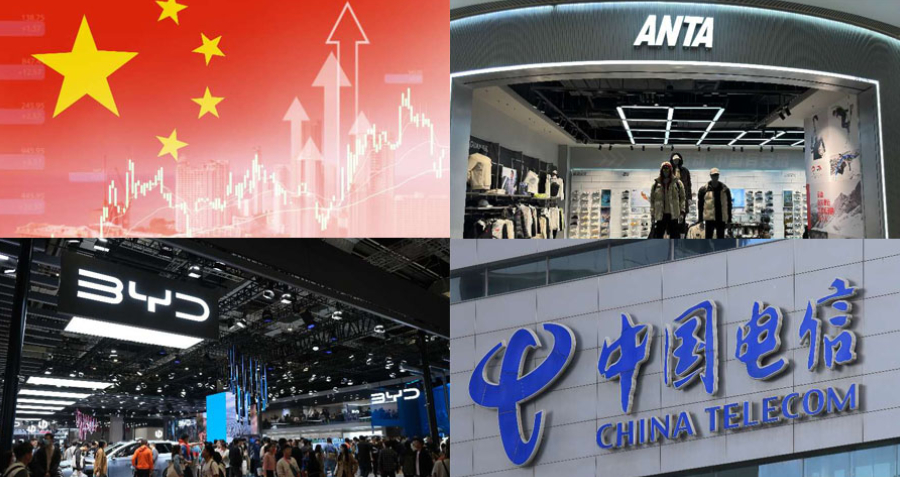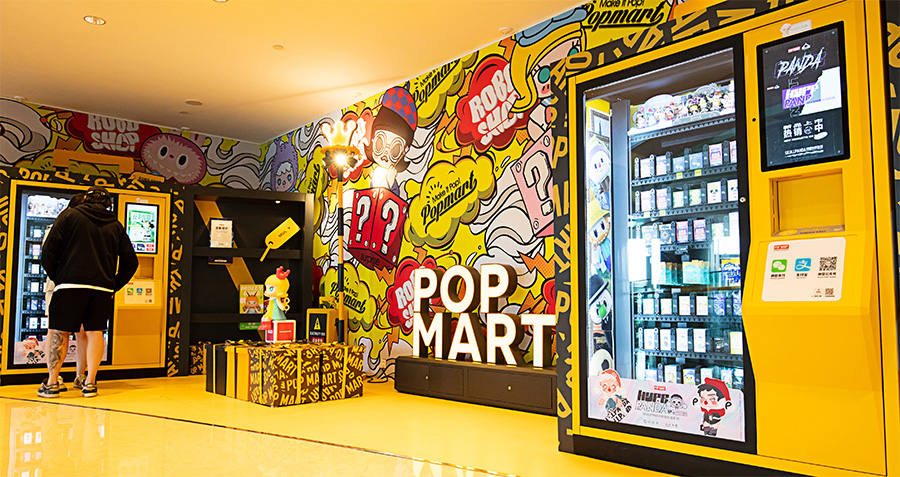Amid the recent Moutai-led boom in premiumization of China’s national drink, baijiu, and the growth in popularity of Maotai-flavor liquor, Langjiu has focused on improving its brand potential. Moutai and Langjiu have since diverged from a relatively similar position to have several key differences.
Brand energy
Potential and kinetic energy are two important concepts in physics, and to extend them to marketing, a large number of brands’ interpretations show clear differences between them. Some brands show abundant kinetic energy through high turnover, high efficiency and fast delivery. The faster the speed of processes, the greater the kinetic energy.
Other brands focus more on potential energy, taking a slower approach to early growth and brand building to rise to greater heights and develop a brand premium, which can then be converted into other successes. The greater the size of the brand, the greater the potential energy. Langjiu has begun to focus more on potential rather than kinetic.
Because of this, international companies or brands invariably have extremely high potential energy. In addition to well-known examples such as Apple and Tesla, brands such as Caterpillar (CAT), the world’s premier construction machinery brand, also have great potential energy. This provides a wide range of horizontal and vertical opportunities, and can be used to influence users, the industry, or even set standards.
There are many perspectives on defining a brand’s potential energy. One such definition posits that this kind of brand will be at the forefront of consumers’ minds, will exert a strong influence on those consumers, and generally be ahead of the competition in the market, coalescing into a brand image that consumers cannot resist.
From another perspective, brands with potential energy are more aligned with feelings of social recognition, respect, and self-realization, focusing on psychological needs such as love, belonging, and fulfillment rather than just the product and its uses. This tends to help push them into higher price brackets. Often, the brand’s founder will likely have very distinct values and an unshakeable adherence to the brand and its content.
So, how can a liquor brand such as Langjiu create momentum, utilize its potential energy to premiumize the brand, generate higher gross profits, and build loyalty?
From river to bottle
The Langjiu brand is centuries old, and in more recent times, has gone from national recognition in the 1980s, to facing bankruptcy in 2002 and back again.
Smart and regionally-based advertising strategies around the time of the 2008 Beijing Olympics helped bring up revenues, which would exceed $10 billion by 2010. Between 2012 and 2016, a series of restrictions on officials consuming baijiu caused the whole liquor industry to dip again. After this dip, Langjiu began to plan a new round of steadier and more long-term focused brand growth.
Moving to higher ground
Langjiu’s marketing strategies before 2017 fell neatly into the brand kinetic energy bucket, aiming at high turnover. Many liquor brands in China are still having difficulties building brand momentum, relying heavily on traditional marketing strategies, which are mainly used to expand awareness.
Against this backdrop, Langjiu weighed the benefits of increasing brand momentum in terms of rapid revenue generation, against the drawbacks of dependence on products alone, and decided to build brand potential, which is arguably the more difficult path and a longer-term strategy.
Langjiu believes that the market environment and the company’s history allow it to build much greater brand potential. One such option was to benchmark against the industry leader, Moutai, with which it has a number of similarities, including where the companies are based, price, quality, sales and reputation. Both companies won the ‘Nationally Famous Liquor’ awards in the 1980s. Because of this award, the company began to publicly present itself as being among the top 2 baijiu products in China.
For Maotai-flavor baijiu, as with many spirits, the aging process affects the quality of the product, and with this in mind, Langjiu created Qinghualang, a high-end brand with retail prices on a par with Moutai using a highly distinguishable navy-blue bottle as its trademark. Although Moutai had better brand potential at the time, the key difference between the two was a greater level of aging in Langjiu’s product, which was intended to make up for the gap in brand potential and prove that drinking it was worthy of the Top Two slogan.
While doing this, Langjiu invested heavily in upgrading technology and the production process, as well as using advertising campaigns to increase recognition of its new slogan. The company also extended the slogan in various ways, emphasizing the company’s links with nature and comparing its benefits to those of Moutai.
Between 2017 and 2019, Langjiu also positioned several of its brands at different price points in the baijiu market, utilizing the growing potential of Qinghualang to gradually pull up the rest of its product lines with it.
Model movement
Alongside new slogans, Langjiu has gradually shifted from the traditional distribution model toward a sales model that emphasizes the brand-consumer relationship, and it was during this process that the growth of brand-building momentum began to appear.
Langjiu began by ‘going out,’ linking itself to various famous Chinese companies. Langjiu has a lot of history to draw upon, and this tends to resonate with decision-makers in such firms. Additionally, serving Langjiu products at subsequent dinners with the companies allowed the product quality to speak for itself.
As a result, the companies would often place large orders with Langjiu and influential business leaders would recommend Langjiu’s products. Baijiu is often the lubricant in business relationships, and Lanjiu became the first choice for more of these occasions thanks to the influence of these famous entrepreneurs.
After ‘going out’ came ‘inviting in.’
As early as 2002, Lanjiu began to use the idea of ‘user experience’ in its marketing efforts. Utilizing the natural resources it has access to, which include a number of caves, as well as its distillery for visits by entrepreneurs and celebrities.
Langjiu’s hospitality capacity has evolved from a guest house that could host around 80 people, to the Langjiu Estates in China’s Sichuan Province, which include a five-star hotel nestled within the natural scenery that accents the area, the distillery, an activity center, and access to the caves. Tianbao Cave in particular is a popular spot, where visitors can see the storage of aging baijiu containers which have been nicknamed the ‘terracotta warriors of wine.’
The construction of the Langjiu Estates was driven by the desire to create longer-term and more meaningful relationships with customers. There is also a membership system that helps connect consumers through events such as forums and golf tournaments. The Langjiu Estates receive nearly 1,000 visitors from all over the country every day, including entrepreneurs, celebrities, influencers, business elites, wine distributors, and partners from all walks of life.
“The Estates serve as a venue to bring high-quality life experiences and enjoyment to its members, and this echoes the spiritual core of Langjiu,” says a company spokesperson.
‘Going out’ acted as something of a conduit to customer acquisition, but ‘inviting in’ cemented the company’s influence with its consumers and helped drive the brand’s potential forward.
Values and global dialogue
Given the success of changes to its marketing approach, higher sales revenues and the continued development of Langjiu Estates, the company’s brand potential reached new heights. In 2021, the company began to transition away from its previous marketing approach of associating itself with the market leader, Moutai, towards tapping into its own brand power with a longer-term mindset.
There was also a recognition that as much as there is value in a name, the best brands provide other kinds of value, through user experience, giving back to society, and promoting human progress. This became the basis of Langjiu’s approach to differentiating itself within the Chinese liquor market.
The company sought to learn from the successes of world-leading vineyards in France in developing the brand into something that can be viewed on that level. The goal is to have baijiu become a symbol of Chinese culture on the global stage.
Langjiu then created a new campaign that drew upon the company’s long history, natural resources, and new experiential offerings in the Langjiu Estates, emphasizing the value it could provide beyond a good quality product.
The company also began to take a leadership role in leveling up the industry itself. At a festival organized by the company at its estates in 2022, Langjiu released a list of product control and development guidelines, which are more stringent than the national guidelines for baijiu production.
Looking forward
The key for Langjiu now is to once again emulate Moutai and other luxury or premium products across the world, by creating the perception of scarcity. This requires both ensuring the quality of the product and also continuing to increase brand potential, so that the brand becomes something of a social currency, to be chased by people.
The company has set out several goals to achieve this. Firstly, it will continue to develop qinghualang as its most important product and aim to increase its value and attractiveness to the consumer base.
Additionally, production and storage are an important cornerstone of the development strategy. Langjiu currently has its highest capacity levels in the company’s history, with 60,000 tons of production capacity and 180,000 tons of storage capacity. By 2030, the company is planning to expand this to 100,000 tons of annual production and over 500,000 of storage. This is particularly important given the increased value gained by aging the product.
Talking about the future, the company’s chairman Wang Junlin released the ‘Hundred Years of Langjiu’ plan, which details three major company goals to be realized by 2030.
- Maintain an important position in the Chinese liquor industry, alongside Moutai, both making high-end baijiu.
- Make itself lead the Maotai-Luzhou-flavor liquor market.
- Turn the Langjiu Estates into a world-class winery and place for those who love the product.
These three goals show the height of Langjiu’s brand potential, with the first two focusing on the domestic market, and the third pointing to the global market. The goals also make clear the relationship between Langjiu and Moutai. They are not necessarily competitors, rather they are partners that can help improve each other. However, if Langjiu wants to ever surpass Moutai in market value, internationalization will be the way to do it.
A new perspective
There are clearly some structural problems for China’s liquor industry, particularly when seeking to expand globally. Baijiu production in 2022 slipped to around 50% of the 2016 level, and revenue growth rates were low. Customs data also shows that in 2022, China’s baijiu exports accounted for just 0.24% of total production and 0.7% of total revenue.
Domestically, these issues are related to demographic shifts, with a declining birthrate and a change in lifestyles that result in unpredictable alcohol consumption trends in young people. Some brands have attempted to appeal to younger audiences with targeted products, and others have begun to sell online via e-commerce platforms, but generally, brands have been slow to change.
In order to resolve these issues, there are several options. The domestic market needs to pay more attention to attracting younger customers, there needs to be greater attention paid to premiumization, and brands should look deeper at internationalization.
Chinese enterprises can no longer just rely on domestic market thinking to solve their issues. Rather they need to take inspiration from international markets and products to continue their brand building, as Langjiu has done by emulating vineyards elsewhere.
Chinese brands need to ‘invite in’ the advanced elements of international brands with help from the global market, global resources and global talent so that they can ‘go out’ into the world more successfully. It will also help avoid the potential involution and homogenization that comes from solely depending on the domestic market.
Langjiu’s brand potential building is an example of this approach, but the company is not without its challenges. The process of internationalization and premiumization is a difficult one but also stands a good chance of success.




















